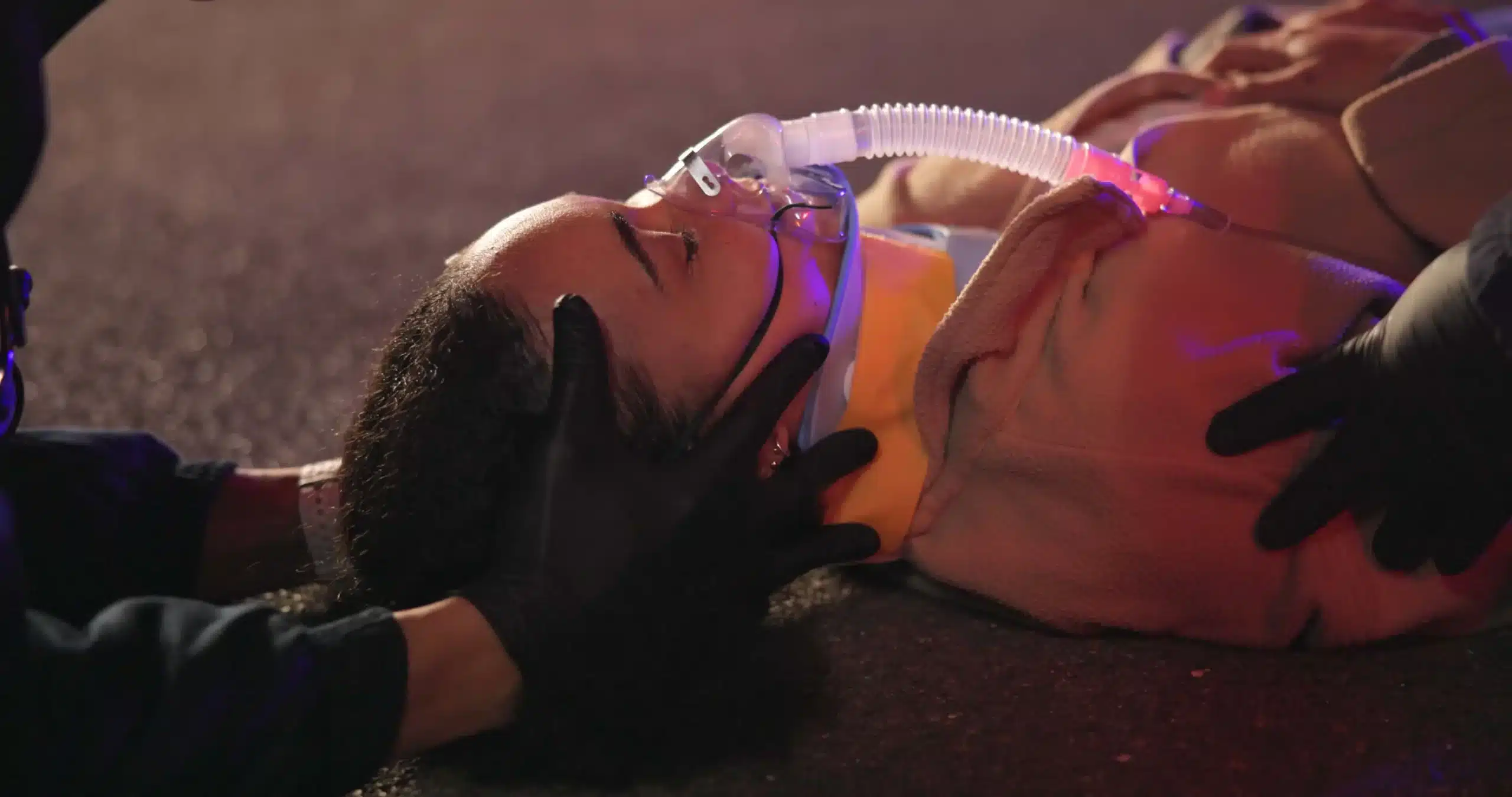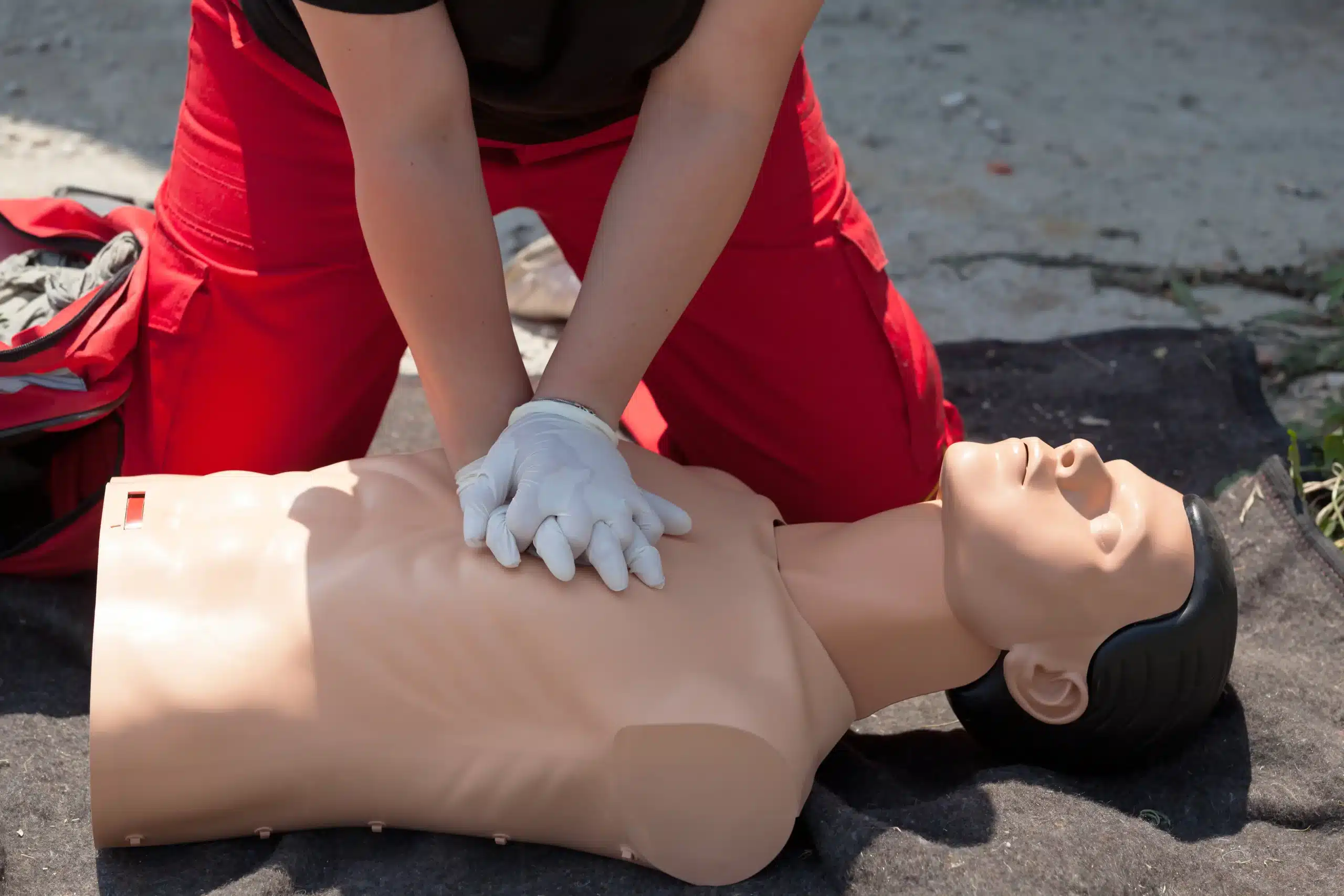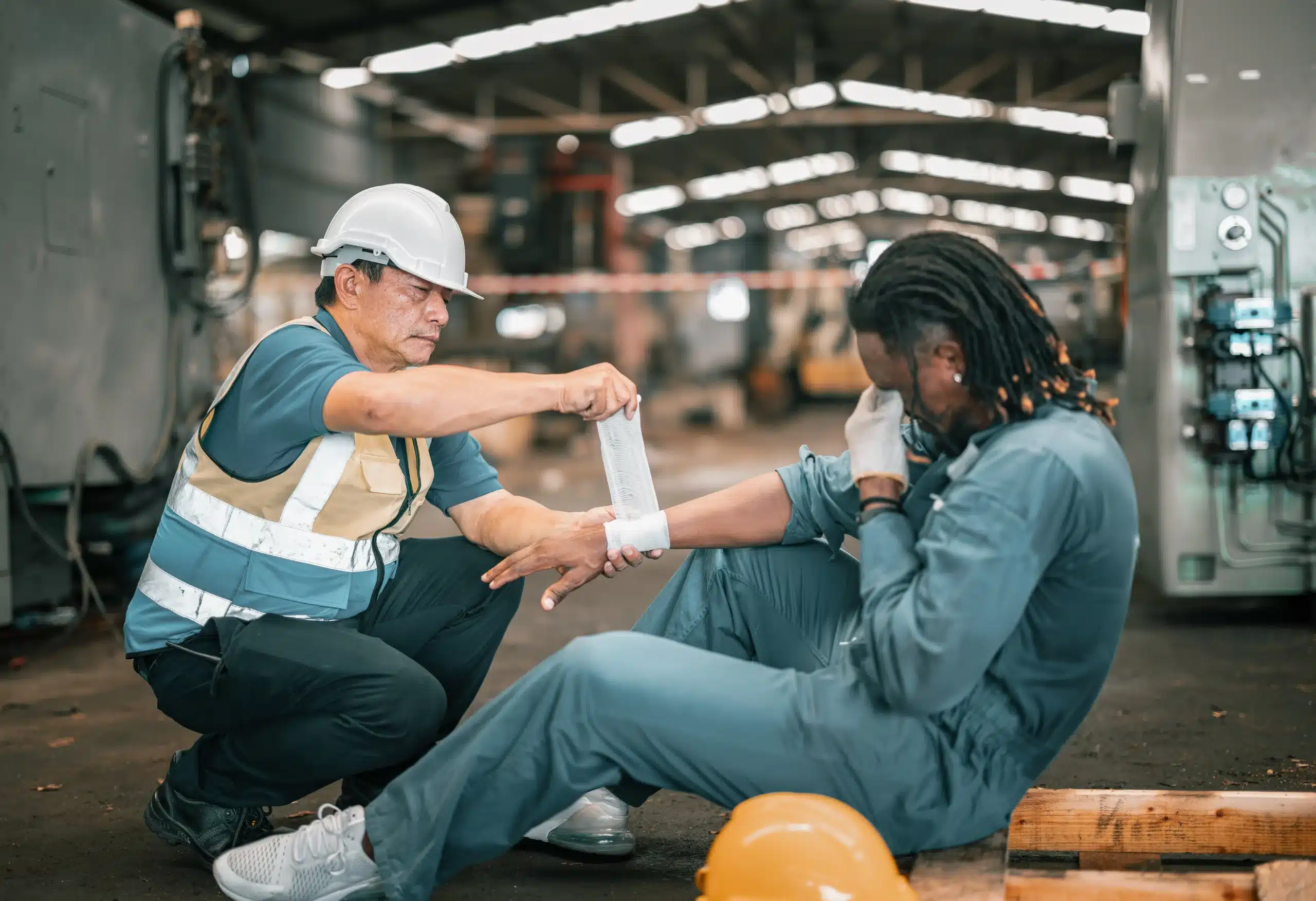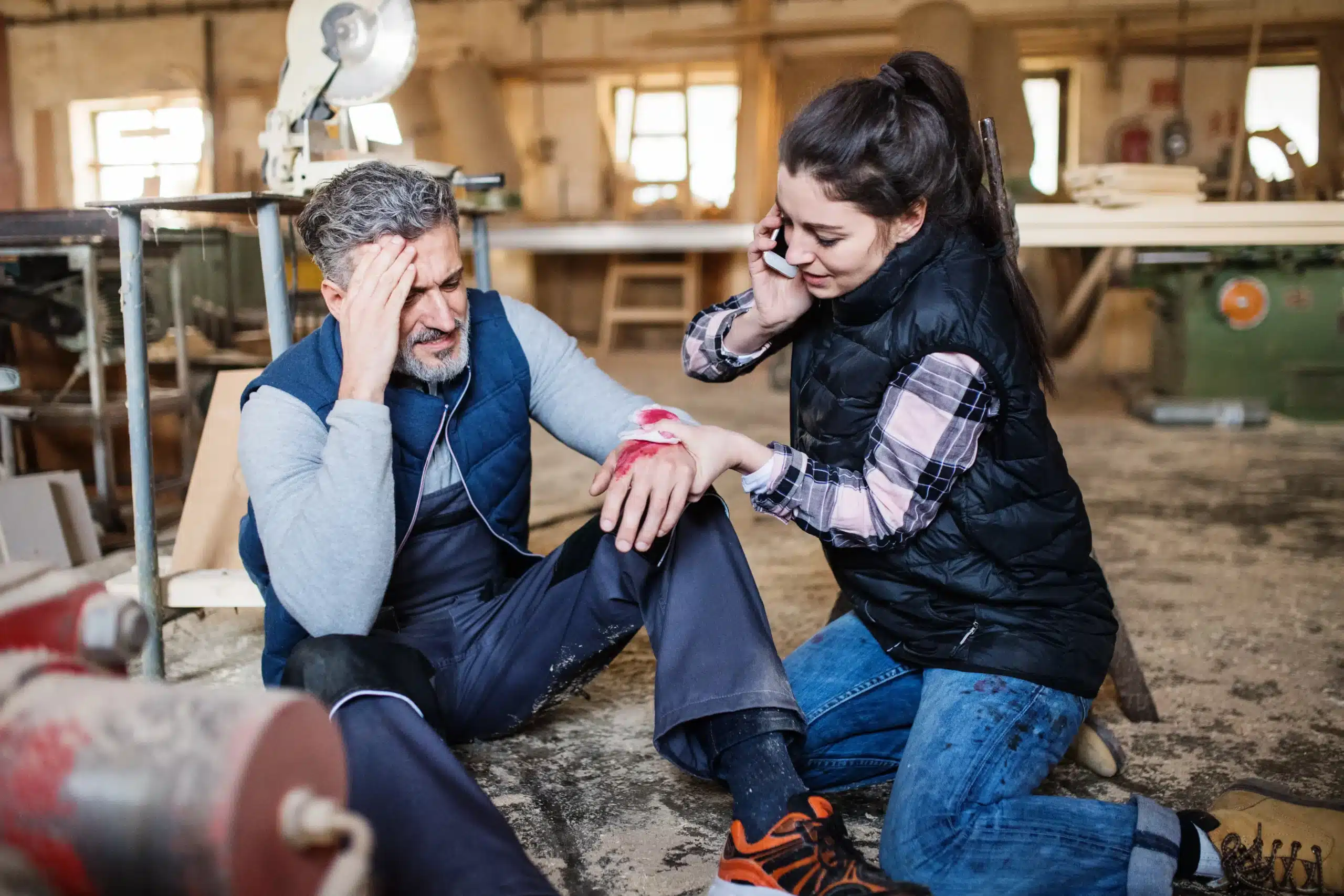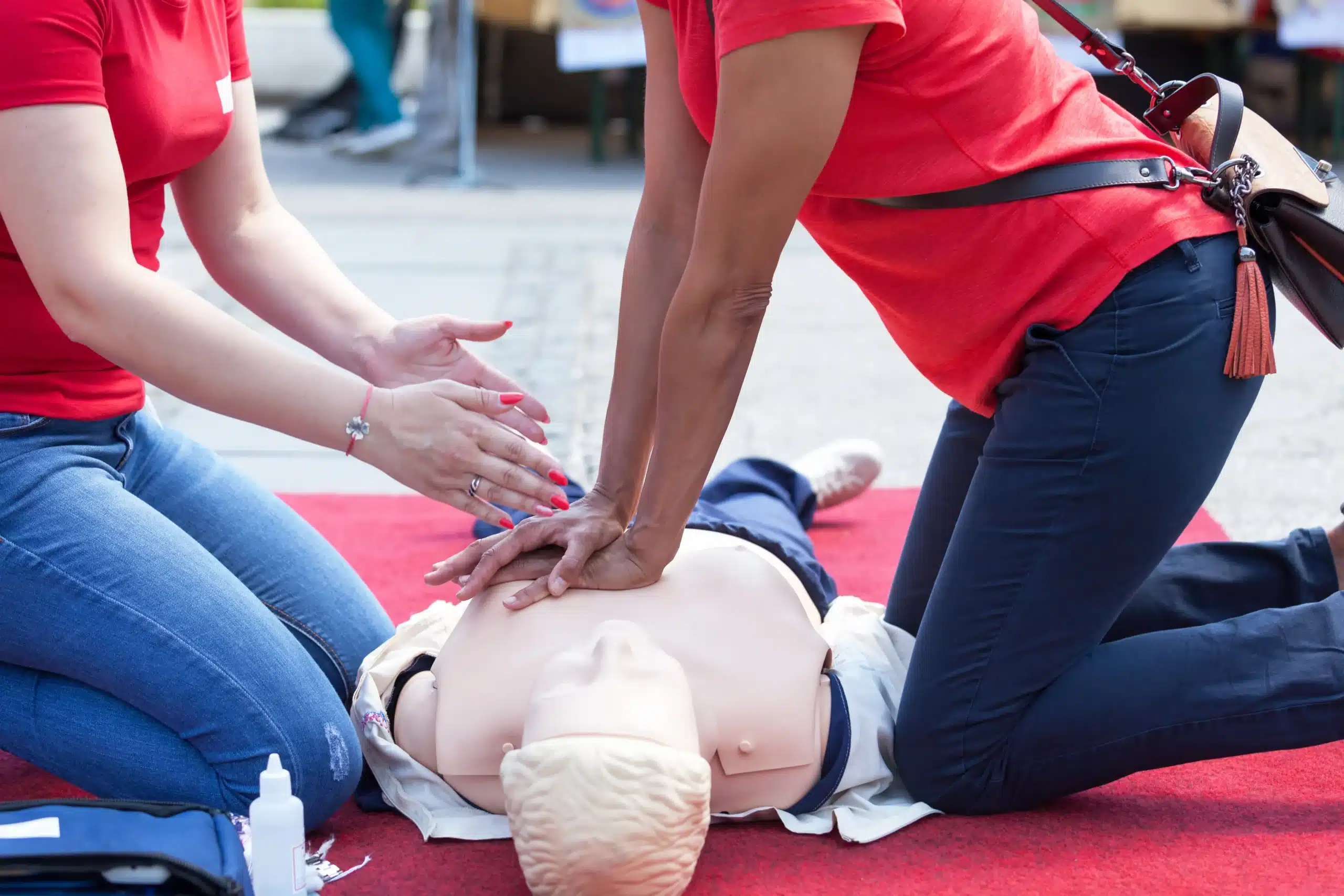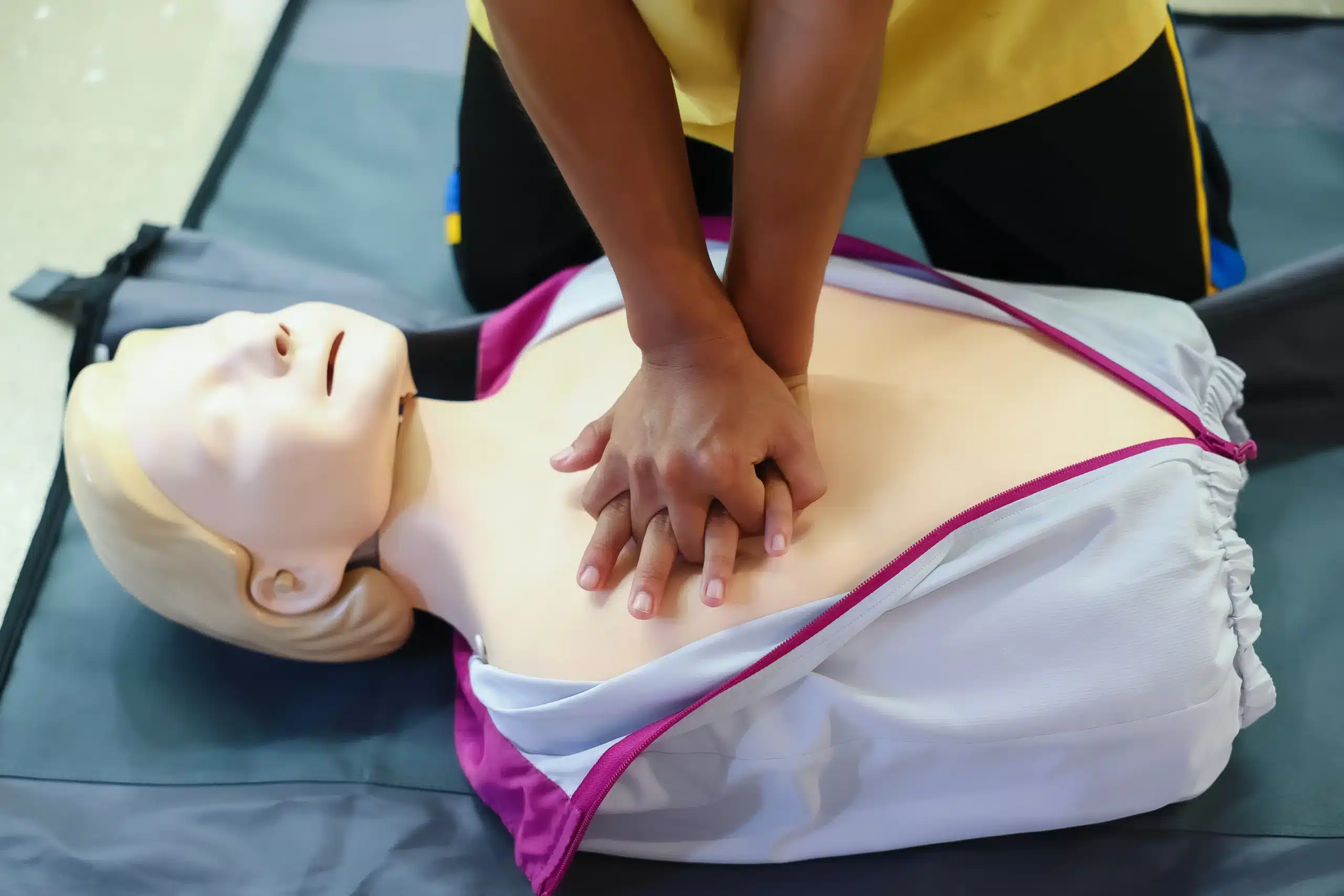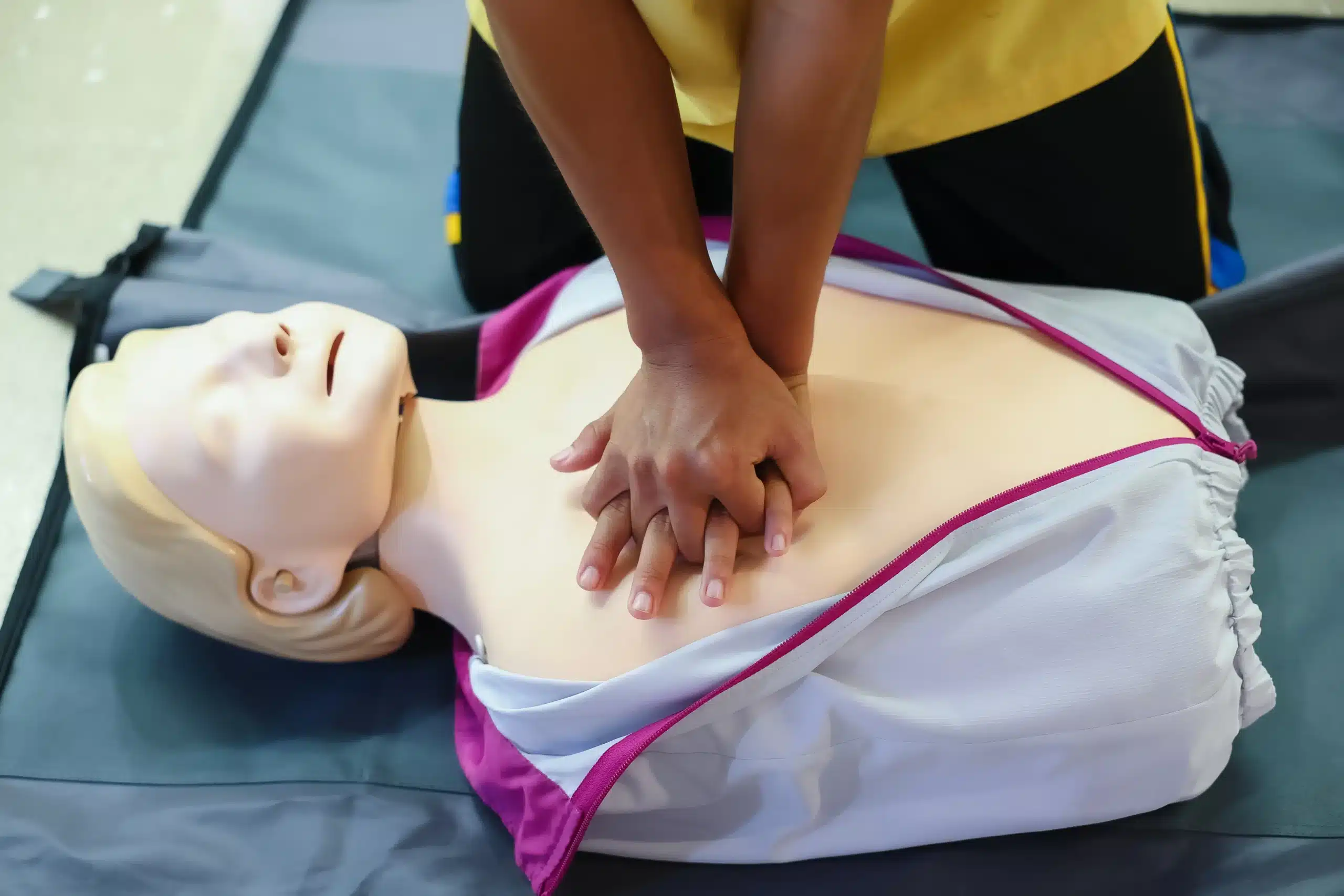Knowing CPR can make you a true everyday hero. It’s a skill that can transform bystanders into lifesavers, empowering them to act quickly and confidently during medical emergencies. This guide demystifies CPR training, explaining the different levels of certification, the importance of choosing the right training provider, and how to find CPR training nearby. We’ll also delve into the costs of CPR training, discuss renewal requirements, and explore the various benefits of becoming CPR certified. Whether you’re in San Jose or another city, this guide will help you find the resources you need to become equipped to save a life.
Key Takeaways
- CPR training is a life-saving skill: Learning CPR equips you to respond effectively during medical emergencies, significantly improving a victim’s chances of survival. Find a course that suits your needs and learn how to make a difference.
- Select the right CPR course and provider: Understand the various CPR training levels—BLS, ACLS, PALS, and Hands-Only CPR—to choose the best fit for your goals. Consider factors like accreditation, instructor qualifications, and class format when making your decision.
- Stay current with your CPR certification: Maintain your skills and knowledge by renewing your certification every two years and pursuing continuing education opportunities. Regular practice and staying updated on the latest guidelines ensure you’re always prepared to act confidently.
What is CPR Training and Why Does it Matter?
Cardiopulmonary resuscitation (CPR) is a lifesaving technique used when someone’s heart stops beating. It combines chest compressions and rescue breaths to keep blood and oxygen flowing to vital organs until medical professionals arrive. CPR training gives you the skills to respond effectively in these emergencies, potentially saving a life. Our San Jose training center offers a variety of CPR courses to fit your needs.
Why is learning CPR so important? Over 500,000 cardiac arrests happen each year in the United States. The American Red Cross states that immediate CPR can double or even triple a victim’s chance of survival. When you know CPR, you’re prepared to act quickly and decisively in a crisis, dramatically improving the outcome for someone experiencing cardiac arrest. A quality CPR training program goes beyond the basics, offering refresher courses and updated resources. This ongoing support helps you stay up-to-date on the latest CPR guidelines and techniques, ensuring you’re always ready to help.
CPR Training Courses: Which One is Right for You?
Choosing the right CPR training course depends on your individual needs and goals. Whether you’re a healthcare professional, someone required to have certification for your job, or simply a concerned citizen, understanding the different levels of training will help you make an informed decision. Here’s a breakdown of some common CPR training courses:
Basic Life Support (BLS)
Basic Life Support (BLS) training provides the foundational skills needed to respond to life-threatening emergencies. This course covers CPR for adults, children, and infants, along with AED use and relief of choking. BLS certification is often a prerequisite for other healthcare certifications and is a good choice for healthcare providers, first responders, and anyone who wants to be prepared. You can find more information on our BLS course page. We also offer BLS courses in San Jose at our Willow Glen location.
Advanced Cardiac Life Support (ACLS)
Advanced Cardiac Life Support (ACLS) training is designed for healthcare professionals who respond to cardiopulmonary emergencies. Building on the skills learned in BLS, ACLS covers advanced airway management, IV drug administration, and the management of cardiac arrest and other cardiovascular emergencies. This course is essential for physicians, nurses, paramedics, and other healthcare providers in critical care settings.
Pediatric Advanced Life Support (PALS)
Pediatric Advanced Life Support (PALS) training focuses on the emergency treatment of infants and children. This course teaches participants how to recognize and manage pediatric emergencies, including respiratory distress, shock, and cardiac arrest. PALS certification is crucial for pediatricians, pediatric nurses, EMTs, and other healthcare providers who work with children.
Hands-Only CPR
Hands-Only CPR is a simplified version of CPR that emphasizes chest compressions without rescue breaths. This method is effective for adult victims of sudden cardiac arrest and is recommended for bystanders. While comprehensive CPR training is always beneficial, learning Hands-Only CPR empowers anyone to take action in a life-threatening situation. You can learn more about common CPR misconceptions in our recent blog post.
Find CPR Training Near You
Locating a CPR class that fits your schedule and budget is easier than you think. Here are a few ways to find CPR training near you:
Online Search Tools
The internet is your best friend when searching for local CPR courses. The American Red Cross website, for example, has a handy search tool that allows you to locate classes by zip code. You can also find various other CPR training providers by searching online for “CPR training near me.” This will generate plenty of results, including independent CPR instructors and companies specializing in safety training.
Local Community Resources
Community organizations are often a great resource for CPR training. Check with your local community centers, recreation departments, or even places of worship to see if they offer CPR courses. Many organizations partner with established providers to host training sessions, making it convenient to learn this life-saving skill within your community. You can also connect with local groups on social media platforms like Nextdoor or Facebook to ask for recommendations.
Healthcare Facilities and Fire Departments
Hospitals and fire departments frequently offer CPR training to both healthcare professionals and the public. Contact your local fire department or hospitals in your area to inquire about upcoming CPR classes. These classes are sometimes offered free of charge or at a reduced cost. For healthcare providers seeking specialized training like the American Heart Association’s RQI program, check with hospitals or training centers like Safety Training Seminars. We offer the RQI program in San Jose and surrounding areas, including Santa Clara and Sunnyvale. Our BLS courses are conveniently located in Willow Glen. We also offer EMSA Health and Safety training, including training on lead poisoning prevention, for childcare providers in California. And, with our low price guarantee, you can be confident you’re getting the best value for your training.
What Happens in a CPR Training Course?
CPR training courses equip you with the skills and knowledge to respond effectively during medical emergencies. They blend theory and practical exercises to ensure you’re confident and prepared. Let’s break down what you can expect.
Course Duration and Format
CPR courses typically last a few hours, depending on the type and level of certification. Like the American Red Cross classes offered in Michigan, many providers offer a range of formats, including in-person, online, or blended learning (a mix of online and in-person sessions). In-person classes are great for hands-on learning, while online courses offer flexibility for those with busy schedules. Blended learning combines the best of both worlds. Our BLS courses in San Jose offer this flexible approach. The Red Cross CPR training options are a good example of the variety of formats available.
Hands-on Practice and Certification
Hands-on practice is a core component of most in-person CPR courses. You’ll learn proper techniques for chest compressions, rescue breaths, and how to use an automated external defibrillator (AED). Expert instructors guide you through simulated scenarios, providing feedback and ensuring you master the skills. As mentioned in resources like CPR classes and certification in Detroit, these in-person sessions often lead to a two-year certification that meets OSHA requirements. Online courses, while convenient, may not always offer full OSHA certification, so check the specifics of the course you’re considering. For childcare providers in California, courses covering health, safety, and lead poisoning are also available through providers like Safety Training Seminars.
Common CPR Misconceptions
Many people hesitate to learn CPR due to misconceptions. Some worry about causing harm, like broken ribs, or are unsure about performing mouth-to-mouth. It’s important to address these concerns head-on. While rib fractures are possible during CPR, effective chest compressions are crucial for survival. Another misconception is that chest compressions alone are enough. High-quality CPR involves both compressions and rescue breaths. Don’t let these myths hold you back from learning a life-saving skill. Articles discussing common CPR myths can help alleviate these concerns. Our RQI classes offer more information and resources. Overcoming these hesitations empowers you to act confidently in an emergency. Our low price guarantee makes accessing this vital training even easier.
How Much Does CPR Training Cost?
CPR training is an investment in lifesaving skills, and naturally, you’ll want to know what to expect when budgeting. Let’s break down the typical costs associated with CPR certification.
Average Price Range and Factors Affecting Cost
The cost of CPR training varies based on several factors. The type of certification you pursue plays a significant role. Basic Life Support (BLS certification) often has a different price point than Advanced Cardiac Life Support (ACLS) or Pediatric Advanced Life Support (PALS) training, given the more specialized nature of those courses. The training provider also influences cost, with organizations like the American Heart Association (AHA) and the Red Cross sometimes having different fee structures. Expect costs to typically range between $50 and $100 for certification courses. This can shift based on your location and the specific program. For example, CPR training in San Jose and surrounding areas like Santa Clara and Sunnyvale might have slightly different pricing than courses offered in other parts of California. It’s always a good idea to check directly with the training center for their most up-to-date pricing. Safety Training Seminars offers a low price guarantee for courses, including BLS courses in San Jose.
Discounts and Promotions
Finding ways to save on CPR training is always helpful. Keep an eye out for discounts and promotions offered by various providers. The American Red Cross occasionally runs specials on their training materials and courses. Some providers also offer discounts for group registrations or returning students. It’s worth checking directly with the organization or browsing their website for current deals. Another smart strategy is to inquire about package deals. Sometimes, combining multiple certifications, like CPR and First Aid, into one training program can lead to cost savings. If you’re a healthcare professional looking to renew your skills, programs like the American Heart Association’s RQI program can offer a streamlined and potentially more affordable way to maintain your certification. For childcare providers in California, explore options like the EMSA Health, Safety, and Lead Poisoning course offered by Safety Training Seminars, which bundles essential certifications.
Choose the Right CPR Training Provider
Finding the right CPR training provider is crucial for a valuable learning experience. It’s not just about getting a certificate; it’s about gaining the confidence and skills to potentially save a life. Here’s what to consider:
Accreditation and Instructor Qualifications
Look for training centers accredited by reputable organizations like the American Heart Association. This ensures the curriculum meets the latest CPR guidelines and standards. Safety Training Seminars, for example, is an AHA Training Center offering BLS courses that align with these standards. Equally important are the instructors. They should be certified and have significant experience in emergency response. A good training company will also offer support after the course, such as refresher courses and access to updated resources.
Class Size and Format Options
Think about what kind of learning environment works best for you. Smaller classes offer more personalized attention from the instructor, while larger classes can be a good option if you prefer learning alongside others. Also, consider the format. Some providers offer traditional in-person classes, while others have online or blended learning options. If you have a large group to train, make sure the provider can accommodate everyone while maintaining the correct student-to-instructor ratio. Safety Training Seminars offers a range of course formats and schedules. They also provide specialized courses like EMSA Health, Safety, and Lead Poisoning for childcare providers in California.
Client Feedback and Reviews
Before committing to a training provider, take a look at what others are saying. Online reviews and testimonials can give you valuable insights into the quality of instruction, the overall learning experience, and the helpfulness of the staff. Positive feedback often highlights instructors who create a comfortable learning environment and provide clear, concise instruction. This kind of feedback can help you feel confident in your choice. Don’t forget to check if the provider offers a low price guarantee, ensuring you get the best value for your training.
In-Person vs. Online CPR Training: Which is Better?
Choosing between in-person and online CPR training depends on your specific needs and learning style. Both formats have their own advantages, so let’s break down what each offers to help you make the best decision.
Advantages of Each Format
In-person CPR training provides hands-on learning with expert instructors. This format gives you the opportunity to ask questions and receive immediate feedback, which can be invaluable for mastering proper techniques. Plus, in-person classes typically lead to a two-year certification that meets OSHA requirements—a must-have for many workplaces. If your job requires CPR certification, in-person training is often the best route. For those in the San Jose area, CPR training is readily available through various providers.
Online CPR training offers flexibility and convenience. It’s a great option if you have a busy schedule or prefer to learn at your own pace. While online courses may not offer full OSHA-compliant certification, they can be a good choice for those seeking a basic understanding of CPR or needing a refresher. The American Red Cross offers resources and information on different CPR class formats.
Blended Learning Options
For those who want the best of both worlds, blended learning options combine online coursework with in-person skills sessions. This format allows flexibility in scheduling while still providing the hands-on practice necessary for proper certification. The American Red Cross offers this type of “Simulation Learning,” allowing you to complete the cognitive portion of the course online and then schedule a shorter in-person session to demonstrate your skills and receive your certification. This blended approach caters to different learning styles and can be a particularly appealing option for those juggling busy schedules. You can find more information on the Red Cross website.
Maintain Your CPR Certification
CPR skills are like any other—if you don’t use them, you lose them. While having initial CPR training is crucial, staying up-to-date and maintaining your certification is just as important. This ensures you’re always prepared to confidently and effectively respond to emergencies.
Renewal Requirements
CPR certifications typically expire after two years. This timeframe is established because research shows that skills and knowledge retention decline over time. Even if you haven’t used your CPR skills in real life, regular renewal ensures you’re always ready. Think of it like renewing your driver’s license—it’s a regular check-in to make sure everyone on the road is up to par. CPR renewal involves retaking the certification course, covering the latest guidelines and techniques. This refresher is essential for providing high-quality care during emergencies. Check with your certifying organization, such as the American Heart Association or the Red Cross, for specific renewal requirements. Safety Training Seminars offers convenient renewal courses for various certifications.
Continuing Education Opportunities
Beyond meeting the minimum renewal requirements, consider ongoing education to truly master your CPR skills. A good training company will offer post-training support, such as refresher courses and access to resources. Look for providers, like Safety Training Seminars, that offer continuing education opportunities. These can include workshops, online modules, and updated guidelines, ensuring you’re always at the forefront of best practices. Regular practice and engagement with the material will keep your skills sharp and your confidence high. Think of it as a continuing investment in your ability to save lives. You can explore more about CPR and first aid training options on the Safety Training Seminars website.
Top CPR Training Providers
Choosing the right CPR training provider is crucial for receiving high-quality instruction and obtaining a recognized certification. Several reputable organizations offer CPR training, each with its own strengths and focus. Let’s take a closer look at some of the leading providers:
American Heart Association (AHA)
The American Heart Association is a well-respected authority on CPR and emergency cardiovascular care. They offer a wide range of CPR courses, from Basic Life Support (BLS) for healthcare providers to Heartsaver courses for the general public. AHA certifications are widely accepted and known for their rigorous standards. If you’re pursuing a career in healthcare, an AHA certification might be preferred or even required by your employer.
Red Cross
The American Red Cross is another prominent provider of CPR training. They offer various CPR classes and certifications, including in-person, online, and blended learning options. The Red Cross also provides training in first aid and other emergency preparedness skills. Their programs are designed to equip individuals with the knowledge and skills to respond confidently in emergencies. This flexibility makes them a good option for those with busy schedules.
National Safety Council (NSC)
The National Safety Council is a non-profit organization focused on eliminating preventable deaths and injuries. They offer comprehensive CPR training programs suitable for workplaces and community settings. NSC training emphasizes practical skills and real-world scenarios, empowering individuals to respond effectively in emergencies. This focus on practical application can be particularly beneficial for those who learn best by doing.
American Safety & Health Institute (ASHI)
The American Safety & Health Institute provides CPR and first aid training that meets industry standards. Their courses cater to diverse audiences, from healthcare professionals to the general public. ASHI certifications are recognized nationally and demonstrate a commitment to safety and emergency preparedness. If you’re looking for a nationally recognized certification, ASHI is a solid choice.
ProTrainings
ProTrainings offers online CPR training courses that provide flexibility and convenience. Their online format allows individuals to learn at their own pace and complete the coursework from anywhere with an internet connection. ProTrainings certifications are recognized nationwide, making them a convenient option for those seeking online certification. This can be a great option for those who prefer self-paced learning or have limited access to in-person classes.
Safety Training Seminars
Safety Training Seminars specializes in CPR, AED, and First Aid training based on American Heart Association standards. They offer on-site classes and cater to various industries, ensuring compliance with certification requirements. Safety Training Seminars is committed to providing high-quality instruction and convenient training options for individuals and businesses. For those in or near San Jose, California, they offer a range of courses, including BLS and the American Heart Association’s RQI program. You can browse their upcoming BLS courses in San Jose and register for a class that fits your schedule. They also offer EMSA Health, Safety, and Lead Poisoning training for California childcare providers. Their low price guarantee makes them an affordable option for those seeking quality training.
Benefits of CPR Training
Learning CPR is empowering. It equips you with the skills to potentially save a life and makes you a valuable asset to your community. Beyond the technical skills, CPR training offers a range of personal and community benefits. CPR certification instills confidence, giving you the ability to respond effectively in emergencies. Knowing you can make a difference is invaluable, especially when seconds count. The American Red Cross emphasizes the importance of CPR training because of the high occurrence of cardiac arrests.
Beyond individual preparedness, CPR training strengthens communities. It creates a network of people ready to assist during medical emergencies, fostering a culture of support and readiness. MyCPR NOW discusses how CPR training builds community preparedness and empowers individuals to act confidently in crises. Choosing the right CPR training provider ensures you receive comprehensive instruction. Look for programs with experienced, certified instructors who offer personalized guidance and feedback.
CPR Certification Now offers advice on selecting a quality training provider, emphasizing factors like instructor qualifications and hands-on training. A reputable training company also provides post-training support, including refresher courses and access to updated resources. This ongoing support ensures your skills remain sharp and aligned with the latest guidelines. The expertise of instructors is another key factor to consider when choosing your CPR training. Experienced instructors bring real-world insights and practical knowledge to the classroom, enriching the learning experience.
Related Articles
- Why CPR is Crucial in Saving Lives
- CPR Classes in San Jose: Your Complete Guide
- CPR Training in San Jose: Find the Right Course
- CPR Certification San Jose: Your Complete Guide
- ARC vs. AHA CPR: Which Certification is Right for You?
Frequently Asked Questions
What are the different types of CPR training available? CPR training courses cater to different needs and experience levels. Basic Life Support (BLS) provides foundational knowledge for anyone, while Advanced Cardiac Life Support (ACLS) and Pediatric Advanced Life Support (PALS) target healthcare professionals dealing with adult and pediatric emergencies, respectively. Hands-Only CPR focuses on chest compressions and is suitable for bystanders. The best choice depends on your specific goals and whether you’re in healthcare.
How do I find a CPR class near me? Finding a CPR class is easy. Use online search tools like the American Red Cross website or search “CPR training near me.” Check local community centers, recreation departments, hospitals, and fire departments, as they often offer courses. Don’t forget to ask for recommendations from friends and family or on local social media groups.
What can I expect during a CPR training course? CPR training involves both theory and hands-on practice. You’ll learn the steps of CPR, how to use an AED, and how to recognize the signs of a cardiac arrest. Most courses include practice on mannequins so you can develop the proper technique and gain confidence. The format can be in-person, online, or a blend of both, and the duration varies depending on the course type.
How much does CPR training cost, and are there ways to save? The cost of CPR training varies depending on the provider, location, and type of course. It typically ranges from $50 to $100. Look for discounts, group rates, or package deals that combine CPR with First Aid training. Some organizations offer discounts for students, seniors, or groups. Always check with the training provider for the most up-to-date pricing.
How do I maintain my CPR certification after completing a course? CPR certifications usually expire after two years. To maintain your certification, you’ll need to take a renewal course. This ensures your skills and knowledge are current. Some providers offer refresher courses or continuing education opportunities to help you stay up-to-date on the latest guidelines and techniques. Regular practice and staying informed about changes in CPR procedures are also important.


